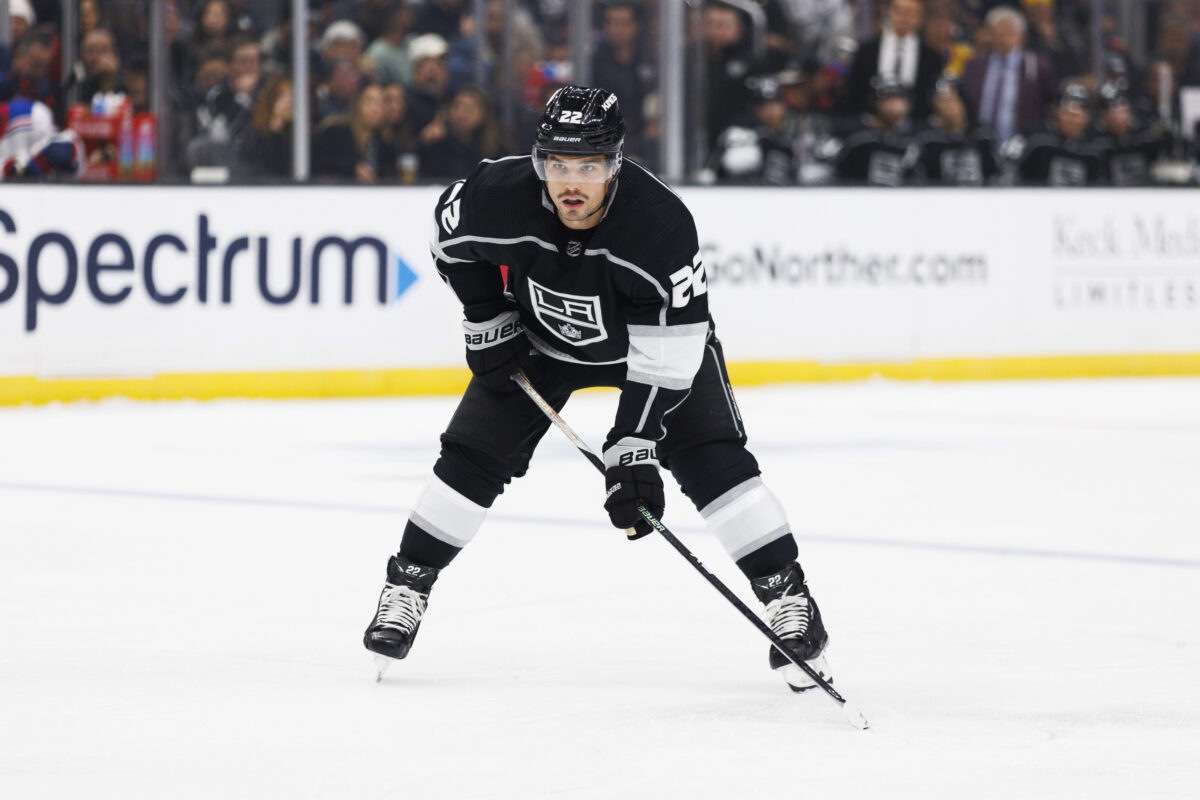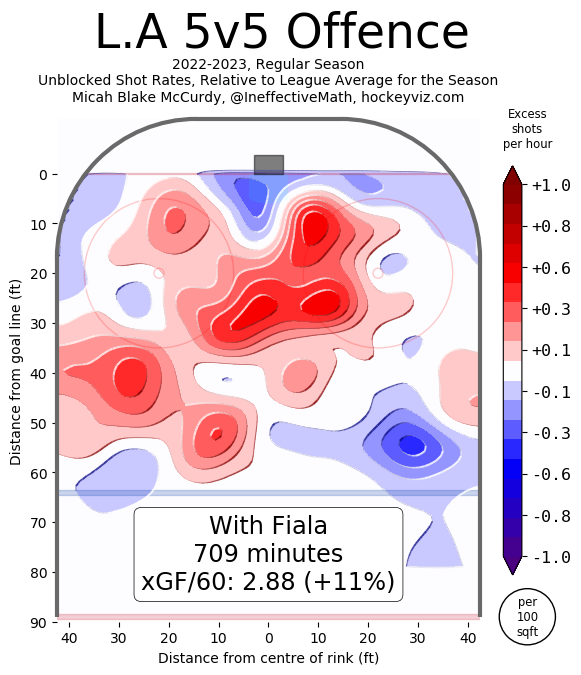In the 2021-22 season, the Los Angeles Kings made a big step toward being contenders again. They made the playoffs for the first time since 2018 and won a playoff game for the first time since 2016. They had spent a few years in the doldrums of the league, and accrued a lot of trade pieces they could use to make a splash and improve their team headed into the 2022-23 season.
Kings Take a Swing and Acquire Fiala
The Kings made a big splash when they decided to trade for Kevin Fiala from the Minnesota Wild. They definitely needed another game-breaking forward, and one that was in the prime of his career was likely to be a target given the age profiles of the rest of the forwards. Fiala was about to turn 26 when the Kings traded for him, and was coming off the best season of his life, posting career highs in goals and points. He was available due to Minnesota’s cap situation, and the Kings pounced on the opportunity to acquire him.

The Kings won the bidding war for Fiala and the price didn’t end up being too steep. They gave up 2020 second-round pick Brock Faber and a 2022 first-round pick, the 19th overall selection. Los Angeles had at least one spot he could take on the wing with the retirement of Dustin Brown. The thinking was that Fiala would slot in next to Anze Kopitar and Adrian Kempe and they would form a dominant first line. Kopitar has historically been a dominant play driver who can get the puck to his wingers effectively, and with Kempe and Fiala both on the rise as 30-goal scorers in the previous season, the potential was there to form one of the best lines in the NHL.
Related: Kings Acquire Fiala for Faber, 1st
Things didn’t exactly work out as planned, as the results weren’t spectacular in the short time this line played together at the start of the season. There were a few injuries and Todd McLellan decided to move Fiala down the lineup. This made sense with how Fiala played in his last season with Minnesota. He wasn’t on the top line, rather he played on a second line where he could be the player with the puck on his stick the most. The emergence of Gabriel Vilardi allowed him to play up on the first line with Fiala moving down, and overall it gave the Kings more forward depth.
Fiala has proven effective no matter what line he has been on at even strength. He leads the team in five-on-five points per 60 minutes. Add that to his team-leading 18 points on the power play, and you have the offensive player the Kings were hoping for when the trade was made.
Fiala’s Analytical Profile
Taking a little bit of a deeper look at how Fiala has done this season, the underlying numbers provide a bit of a different story. Fiala was a solid possession player when he began his NHL career with the Nashville Predators, and that continued in Minnesota. He’s impacting the offense in the way the Kings had hoped for when they acquired him. The image below shows just how dangerous the offense is when he’s on the ice.

Fiala is clearly driving offense a ton, the best on the team. It’s hard to imagine where the Kings would be without him, as they have needed scoring to make up for the goaltending deficiencies that have seen them allow the 10th-most goals per game in the league. Fiala has actually been a slight negative for the Kings overall in terms of shot share, as they allow more shot attempts than they get when he’s on the ice at five-on-five. However, it’s only a slight negative at minus-.23 percent, and it’s something they can live with. When you have lines centered by Kopitar and Phillip Danault, you don’t need the other scoring line to be perfect defensively if they are going to be adding offense.
Playoff Contribution Will be Key for Fiala
The Kings made the playoffs last season, and look to be on their way there again this season. They currently have a 64 percent chance of making it back, according to The Atheltic’s model (“2022-23 Stanley Cup Playoff Chances and Projected Standings”, The Athletic, 1/31/2023). When they made it last season, they had a lot of trouble scoring. They scored just 17 goals in seven games against the Edmonton Oilers, for an average of 2.43 goals per game. That isn’t going to get it done against most teams, especially a high-flying team like Edmonton. They also had a net power play efficiency of just 4.3 percent.
Fiala should be able to help improve both if he’s on his game. The problem is that he hasn’t been on his game in the playoffs too often. In 35 career NHL playoff games, he has just 15 points. In the last two seasons in which he’s established himself as a great offensive player, he has only one goal and five points in 13 playoff games.
With the way things have played out, this deal certainly looks like a win for the Kings. Fiala is doing exactly what they wanted and was named to the All-Star Game for the first time in his career. Additionally, it doesn’t look like either of the assets they gave up to acquire him will turn into blue-chip players. They did sign him to a long, seven-year contract and it remains to be seen how he plays throughout the duration of that deal, but if he can keep this up for at least the next few years, this trade worked out nicely for Los Angeles.